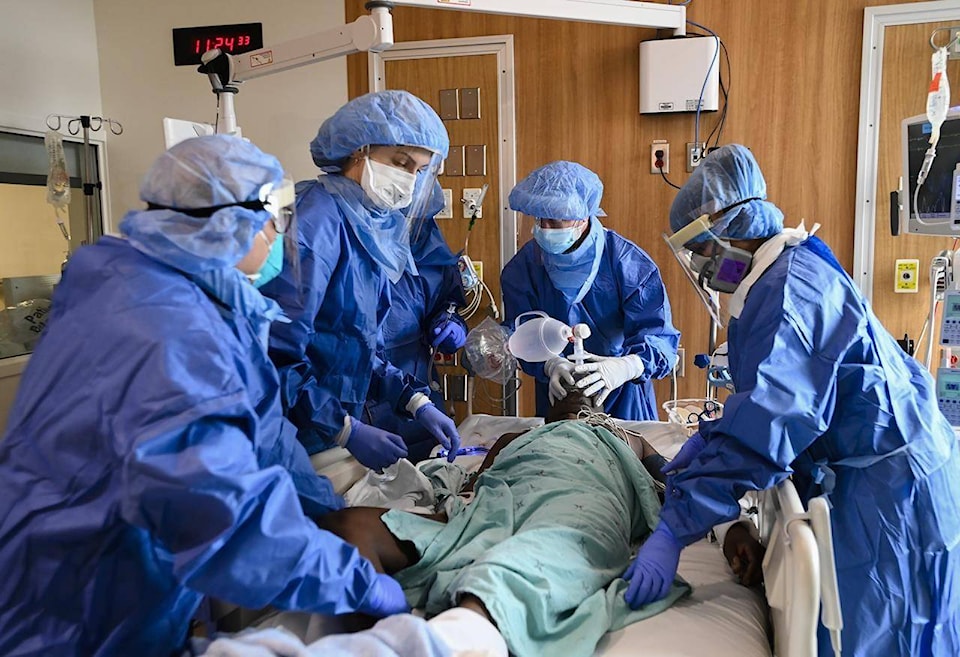Dr. Carolyn Snider felt a gamut of emotions while working in one of the busiest emergency rooms in Canada during the last 18 months of the COVID-19 pandemic.
Seeing the harm the virus was inflicting on vulnerable people was “overwhelming,” “frustrating” and “exhausting,” she said, and it was hard to ignore the fear that doctors and nurses were putting themselves and their families at risk.
“There were rare days in the year of 2020 that I actually slept a full night,” said Snider, the chief of emergency medicine at Toronto’s St. Michael’s Hospital. “A lot of that was around uncertainty, a lot of it was an overload of information that changed incredibly quickly.
“For somebody like myself who works in emergency medicine, this is what I live for, this is who I am. But it was incredibly tough because there were no breaks from that overload.”
A pair of surveys conducted by the Ontario Medical Association in 2020 and 2021 suggest physician burnout, characterized by exhaustion and feelings of detachment, was on the rise during the pandemic.
More than 72 per cent reported at least some level of burnout in the March 2021 questionnaire, which included responses from 2,649 Ontario doctors, medical students and residents, and nearly 35 per cent revealed they had either persistent symptoms or felt completely burned out.
Those figures were up from the March 2020 survey — conducted as COVID-19 was first hitting North America — that saw 66 per cent of respondents report some level of burnout, with 29 per cent saying they had persistent symptoms.
Dr. Adam Kassam, president of the OMA, said physician burnout has always been a problem, but it’s been exacerbated by the COVID-19 crisis.
“It’s taken a toll on us, just as it has for nurses and other health care workers,” Kassam said. “We’re all being stretched impossibly thin.”
Physician burnout has been associated with increased depression, substance use and suicidal thoughts, Kassam said, and it may reduce productivity, increase turnover and possibly decrease patient access to care.
Kassam said many doctors and nurses have recently left the health-care sector altogether, with some opting for early retirement. But burnout seems to be impacting younger doctors now, he added.
Kassam noted the 2021 survey revealed the burden of burnout had shifted to the 25-to-34 and 35-to-44 age groups, compared to the 2020 questionnaire that saw 45-to-54-year-olds reporting the most burnout.
“We are seeing and (we’re) concerned about an exodus in the profession,” he said. “When you think about sustainability into the future, you can’t have a health-care system without health-care providers and our message is very clear: you can’t have healthy patients or healthy communities without a healthy physician workforce.”
The OMA released a report Wednesday saying COVID-19 has reinforced the need to find solutions to burnout among doctors, not only for their well-being, but also to ensure “sufficient health-care resources … to address the deficit of care caused by the pandemic.”
The OMA report contains solutions, such as reducing and streamlining documentation, support for physician wellness at their workplaces and more work-life balance through flexible work arrangements.
Snider said it’s important that health-care facilities commit to physician wellness, ensuring staff check in with doctors and nurses after tough procedures, including intubating a COVID-19 patient.
“After every intubation in those first days of COVID, (staff) got a phone call the next day, the team had a check-in,” she said of a policy implemented in her department.
“We knew how scary it was to actually be doing an intubation in those early days of COVID, without truly having enough evidence and understanding of how we were keeping ourselves and our colleagues safe.”
While COVID-19 deaths and hospitalizations have slowed as vaccine uptake increased, Snider said the demands on doctors and fear of burnout remain high.
She said her emergency department traffic is at “unprecedented” levels with people who put off non-COVID-related ailments during the pandemic now coming through. Doctors are increasingly worried about COVID spiking again in the fall, she added.
“People who had delayed care because of COVID are coming in sicker … and the impact of that on health resources is big,” she said. “Because of the burnout, because of some of the attrition in multiple health-care worker groups, we’re actually finding it incredibly difficult right now.”
This report by The Canadian Press was first published Aug. 18, 2021.
Melissa Couto Zuber, The Canadian Press
